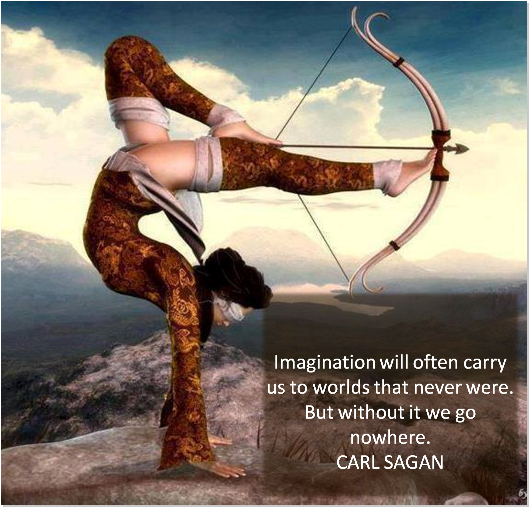In 2022, Easter Sunday falls on Apr. 17.
In 2021 it was Apr. 4; in 2020, it was Apr. 12, and in 2019 it was Apr. 21.
I don’t know about you, but that is quite a range for a special day. It seems Easter’s date fluctuates wildly.
So I wanted to know why Easter moves around.
Well, believe it or not, it found it all has to do with the Moon.
Easter occurs on the first Sunday after the “Paschal Full Moon.” In simple terms, that is the first full Moon immediately following the Spring Equinox.
However, that’s not the whole story because Easter isn’t based on the actual Moon or equinox date!
Confused yet?
Determining when Easter will be can get more than a bit confusing because of the occasional differences between the ecclesiastical dates and the astronomical dates.
Are we into the weeds, yet?
The astronomical dates: The Old Farmer’s Almanac explains that the Spring Equinox is when the Northern Hemisphere begins to tilt more towards the sun after this date, resulting in warmer temperatures and longer daylight hours. However, in the Southern Hemisphere, the equinox signals the start of autumn.
The publication explained that the word equinox comes from the Latin words for “equal night” and that the spring equinox falls on March 19, 20, or 21 every year.
Now the ecclesiastical dates. The date of Easter is tied to the relationship between the Paschal full Moon, and the date of the Spring Equinox.
In years in which the Church’s March equinox and Paschal Full Moon dates do not coincide with the astronomical dates of these events, there may be some confusion about the date of Easter. In 2019, for example, the March equinox in the Western Hemisphere happened on Wednesday, Mar. 20, while the first Full Moon in Spring was Thursday, Mar. 21 in many time zones.
Now it gets pretty deep into the swamp.
If the Church followed the timing of these astronomical events, Easter would have been celebrated on Mar. 24, the Sunday after the Full Moon on Mar. 21.
However, the Full Moon date in March specified by the Church’s lunar calendar, also called the ecclesiastical Full Moon, was Mar. 20, 2019, which is one day before the ecclesiastical or religious date of the March equinox, Mar. 21. For that reason, the Easter date 2019 was based on the next ecclesiastical Full Moon, on Apr. 18. That is why East was Sunday for April was the 21st.
So how did all this come about?
The method to calculate the date of Easter is called ‘computus’, from the Latin word that means, you guessed it, calculation. It was a big, big thing in the Middle Ages – and still is today.
Easter marks the date of Jesus’s death and Resurrection, which, according to the Bible, happened around the Jewish Passover.
Like the date of Passover, the date to mark the Resurrection was calculated using the lunar calendar, and based on the cycles of the Moon. This threw a spanner in the works, as lunar cycles were calculated in various ways back then.
Moreover, different Christian groups disagreed on the date to celebrate the Resurrection. Some celebrated it on Passover itself, some the following Sunday.
This made things quite complicated.
In 325 AD, Emperor Constantine called the Council of Nicea, the first Council of the Christian Church. As well as discussing other key beliefs, the Council wanted to settle the issue of the date of Easter.
It was decided that all Christians should celebrate Easter on the first Sunday after the first full Moon on or after the spring equinox.
That should have put the issue to bed once and for all. But different traditions kept calculating it in different ways,
In England, for example, Irish monks forcefully argued that their way of doing it had started with John the Evangelist. But Roman monks claimed their calculations had begun with St Peter himself.
One year, Northumbrian King Oswy – who followed the Irish tradition – celebrated Easter at different times from his Kentish wife, who followed the Roman tradition. To put it in today’s words, that was awkward.
So, in 664, a meeting of the clergy was organized in Whitby Abbey to sort the matter out. King Oswy had the final say and decided the Roman tradition should be adopted in the whole of England.
At the end of the 16th century, things changed again. Christians had, up to this point, followed the Julian calendar (named after its inventor Julius Caesar). In this system, there is a repeating pattern of three years of 365 days followed by a leap year of 366 days. However, this calendar overestimated the length of the tropical year, the time from one equinox to the next, which also affected – you guessed it – the date of Easter.
To solve this, in 1582, Pope Gregory XIII suggested knocking off a few days from the calendar and adjusting the frequency of leap years. That year most countries went with the Pope’s plan. But, by that point, England was largely a Protestant country. The change suggested by the Catholic Pope proved to be quite controversial and wasn’t implemented.
In the 18th Century, Parliament declared that enough was enough. It was decided England, Scotland, Wales, and Ireland would follow the same calendar as most of Europe.
Today, although the Gregorian calendar is the international civil calendar, it’s still not used by all churches. The Orthodox Church follows the Julian calendar, so the Orthodox Easter normally falls a bit later (in 2022 it will be marked on Sunday Apr. 24.)
So we have some rules that make sense, that Easter will be observed AFTER the next full Moon (the Paschal Full Moon) in mid-April. The full Moon nearest to Easter can change. Thus, Easter was celebrated on Sunday, Apr. 21, 2019. Sometimes, it’s the full Moon that occurs in March and sometimes it’s the full Moon that occurs in April.
Using the astronomical dates for 2022, the vernal equinox in the Northern Hemisphere occurred on Sunday, Mar. 20. The first full Moon to occur after that equinox date was April’s full Pink Moon. In 2022, April’s full Moon (Apr. 16) will be nearest to Easter (Apr. 17).
Pink Moon?
April’s full Moon rises on the night of Saturday, Apr. 16. Traditionally called the Pink Moon, this full Moon is also the Paschal Full Moon this year.
Why would I get all jazzed about that this year’s Pink Moon, the Paschal Moon, and Easter come all at the same time?
After all, we Americans have been through a lot lately. Spiritually, the Pink Moon always signifies rebirth and renewal. After a long, cold, gray, and miserable winter, the resurgence of the color pink is a revitalizing taste of beauty and joy. It serves as a reminder that life is a set of ups and downs, a cycle of hibernation and reawakening.
The Paschal full Moon heralds the time of Easter – symbolizing the beautiful connection to Mother Earth celebrated by the Old Pagan traditions: end of cold winters, birds laying eggs, wildflowers popping up and fruit trees are blossoming as bees and butterflies swirl in the breeze. People are falling in love, planting seeds in their gardens, cleaning their homes and decorating them with flowers. Fertility, new beginnings, hope, and beauty are being called in.
Spring is a time of earth renewal, and whether we are conscious of it or not, we may notice that in our ancient bones we too are feeling called to awaken and renew ourselves.
Venture outside on the night of Saturday, Apr. 16, to catch a glimpse of April’s full Pink Moon. This full Moon reaches peak illumination at 2:57 P.M. EDT, but won’t be visible above the horizon until after sunset.
For the best view of this lovely spring Moon, find an open area and watch as the Moon rises just above the horizon, at which point it will appear its biggest and take on a golden hue!





